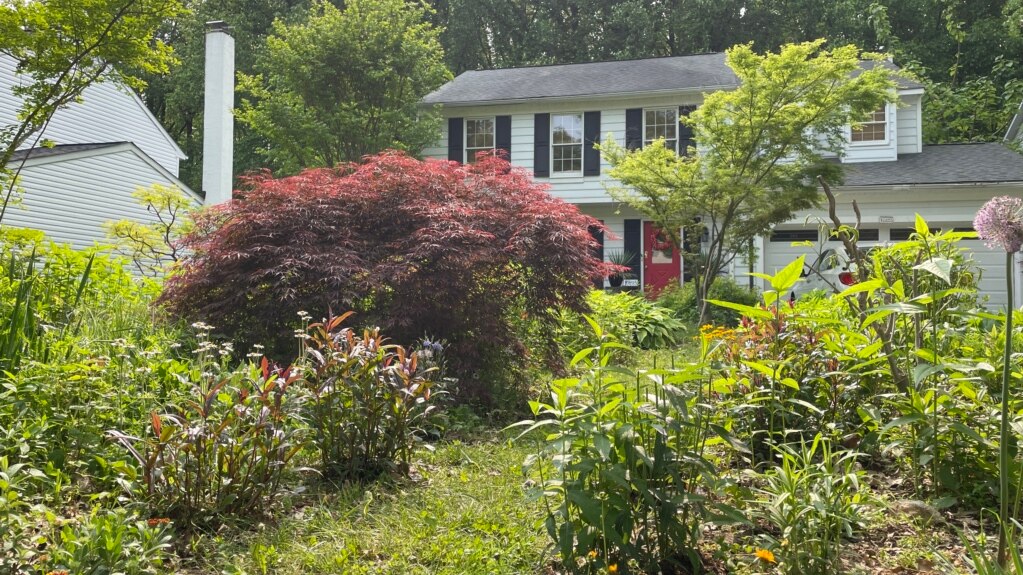The area in front of Janet and Jeffrey Crouch’s house in Columbia, Maryland, does not look usual for their neighborhood.
That is because the Crouches do not have a grass lawn. Instead, they have some small trees and many native plants.
Lawns are areas around a house or in a park that are covered with short grass. In recent years, support for replacing lawns with native plants has been increasing in the United States. The process is called rewilding.
In fact, the number of Americans planning to turn part of their lawn to native wildflowers doubled between 2019 and 2021. That information comes from the National Gardening Survey of 2,061 U.S. adults. In 2019, the percentage was nine percent. By 2021, it rose to 19 percent.
Paul Robbins is the writer of Lawn People: How Grasses, Weeds, and Chemicals Make Us Who We Are.
He said that most people would prefer not to have lawns. “But they feel that they need to have them, or that they can’t do anything about it.” He added that many homeowners feel they should have lawns to please their neighbors.
It can be costly to keep a lawn looking good and green. But the Crouches had to spend much more money for the right not to have one.
People living in a house next to them complained to their homeowner’s association, or HOA. The neighbors did not like that the Crouches did not have a grass lawn. HOAs can make rules about the plants that homeowners in a neighborhood are permitted to grow. Many HOAs require grass lawns.
The HOA ordered the Crouches to pull out their native plants and put in grass. However, they refused.
“We knew we were doing things that were beneficial for the environment,” said Janet Crouch. She told VOA that it seemed wrong to put in only grass, which she called an environmental dead zone.
Lawns are called environmental dead zones in part because they provide no food or shelter for wildlife. They also do not support pollinators like birds, bees, and butterflies. Bee populations have been getting smaller in North America and may be getting smaller around the world.
Ted Steinberg is the writer of American Green: The Obsessive Quest for the Perfect Lawn. He said there are other reasons that lawns are bad for the environment.
He said they require a lot of water and chemicals. Large amounts of water can remove nutrients from the soil.
Steinberg said that after the water removes the nutrients, people buy even more chemicals to put on their lawns. Scientists say some of these chemicals might cause cancer and other health problems.
Nancy Lawson is the writer of The Humane Gardener and Wildscapes. She is also Janet Crouch’s sister and the person who urged the Crouches to put in native plants.
Lawson said there are over 16 million hectares of grass lawns in the U.S. That means lawns use more water than any other irrigated crop in the country.
The Crouches’ battle against their HOA took three years. They say they spent $60,000 fighting to keep their natural garden. They won. Because of their efforts, the state of Maryland passed a law that lets people grow native plants instead of grass, no matter what their HOA wants.
I’m Andrew Smith.

